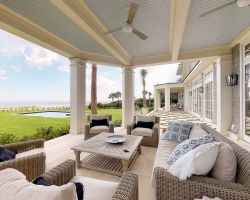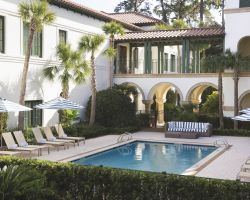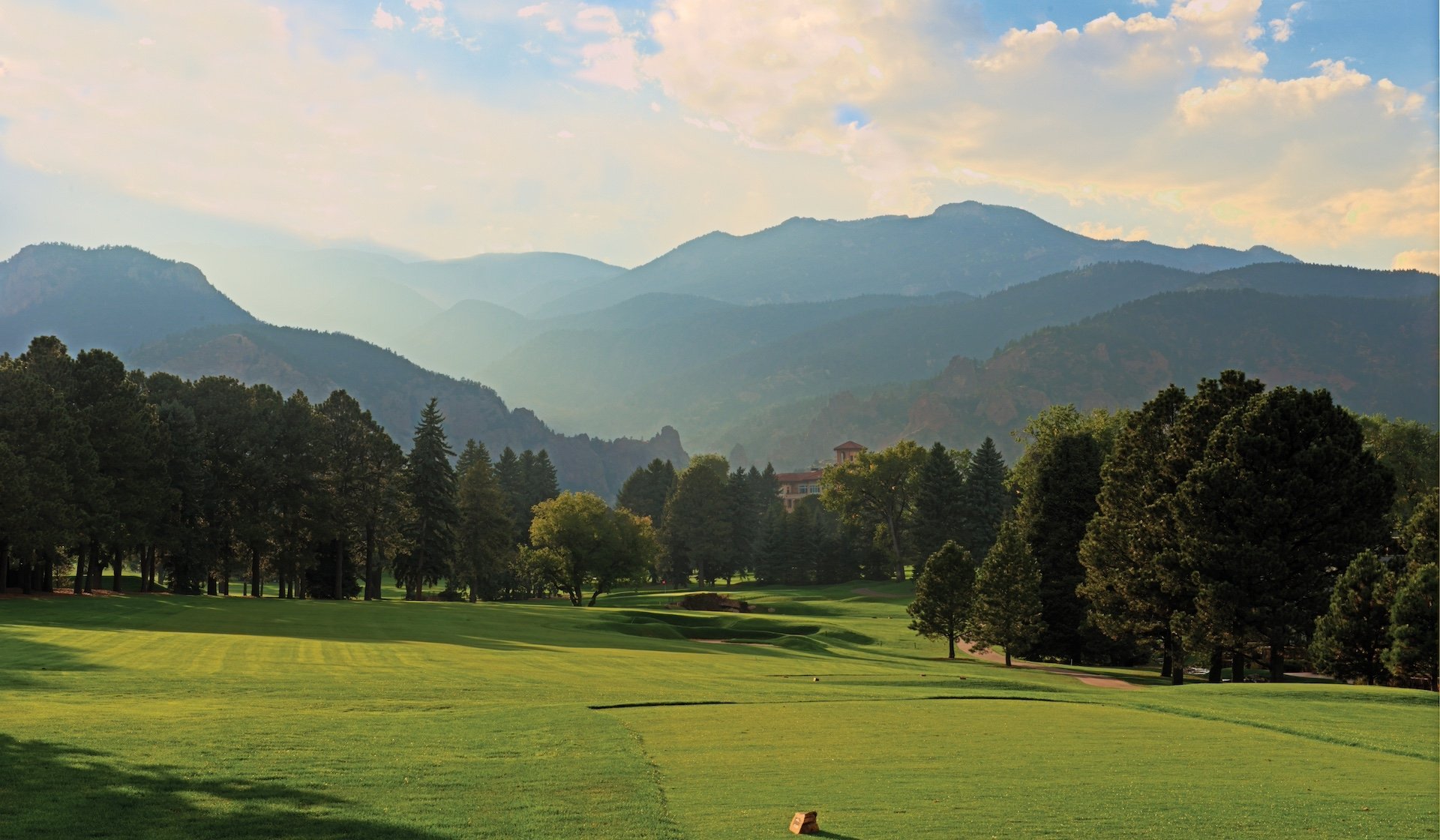Reaching Altitude
From high to low, learn how to navigate extreme elevations at some of the country’s top golf destinations.
If you’re searching for a sport with tremendous growth, look no further than golf. Still riding the highs of its massive increase in 2020, as reported by The National Golf Foundation, golf enjoyed a boost of 6.2 million new players–the largest increase the sport has seen in 17 years. With such a record-breaking number of rookies across the country, some have noticed just how different play can be at varying elevations.
At higher altitudes, golfers may see changes to the shape, spin, and distance of their shots. With a driver, they can expect an additional 2.5 yards of coverage per 1,000 feet of altitude. And while this may make some feel like their game is soaring to new heights, golfers already living at higher elevations notice that coming down can be a humbling experience.
With courses at, above, and below sea level, golf experts at some of the nation’s top courses share their tips on keeping your game steady–at any elevation.
ON TOP OF THE WORLD
It probably goes without saying: the higher the altitude, the thinner the air. For golfers, that means less friction on their drives. At 6,400 feet in elevation, players flock to Colorado Springs not only to golf amid the stunning beauty of the Cheyenne Mountains’ dramatic peaks–but also to see their ball fly farther than ever before.
“At this altitude, players should expect to cover more distance with their shots and will need to involve more math than they may expect,” says Russ Miller, Director of Golf at The Broadmoor. “On our courses, the ball flies about 15 percent longer. So, if your typical swing covers 150-yards at sea level, you may see it travel upwards of 165 yards here.” Miller instructs: Additionally, golfers will need to estimate how high they are elevated above the landing area and subtract the appropriate yardage from their shot. A good rule of thumb to follow for this uphill, downhill club choice is the 15-feet formula.
If golfers are shooting an uphill or a downhill shot that varies 15 feet of elevation, add or subtract one club. If the shot is greater than 15 feet, add or subtract one club for every 15-foot increment. And while this may sound like a problem better suited for a mathematician, a bevy of golf rangefinders are available on the market to help new golfers select the right club for these types of elevation change.
When it was constructed in 1916, the original course at The Broadmoor Golf Club was the highest in U.S. elevation. Although other courses have since surpassed this mark, Broadmoor’s historic greens still boast rarified altitudes.
“Golfers often take full advantage of our elevation with longer hits on the back nine of The East Course,” says Miller. “But don’t let the stunning views distract you.”
Considered the Centennial State’s coveted crown jewel of golf, The Broadmoor Golf Club is consistently ranked among the best in the world. With two iconic courses, designed by some of golf’s greatest names, the club has hosted numerous national tournaments, including the U.S. Women’s Open, PGA Cup Matches, and, in 2025, will host The U.S. Senior Open.
AS ABOVE, SO BELOW
Just as higher altitudes increase a ball’s hang time, some unique challenges present themselves on the opposite end of the spectrum. At more than 200 feet below sea level, The Furnace Creek Golf Course at Death Valley is the world’s lowest in elevation. However, that’s not the only reason why the course was named among the “50 toughest in America,” by Golf Digest.
Atmospheric conditions, low barometric pressure, and prevailing winds make the aptly named golf course a brag-worthy challenge. Because, just as elevation affects your game, temperature does as well.
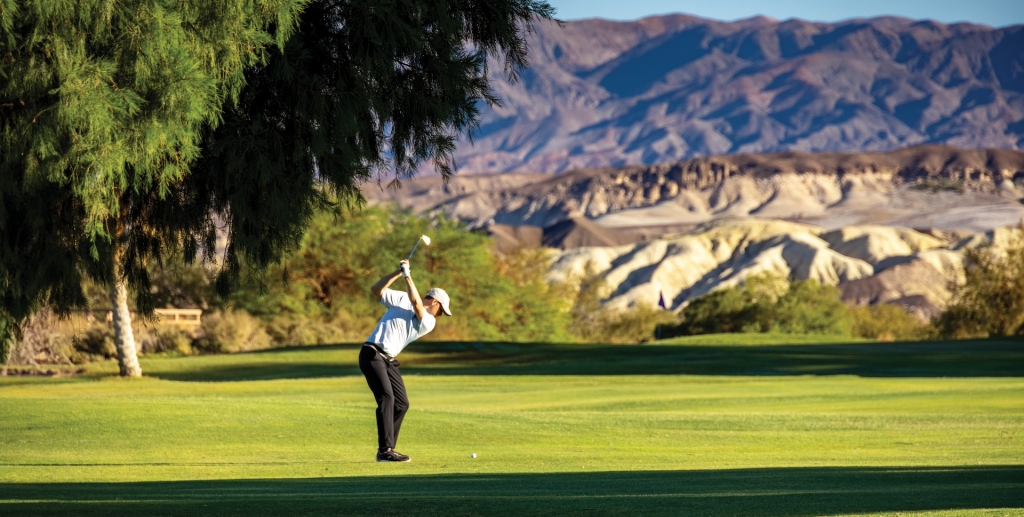
The Furnace Creek Golf Course at Death Valley is rated one of “America’s 50 Toughest Courses.”
According to studies, golfers will gain roughly two yards on their drives for every 10 degrees the temperature rises. So, let’s say you typically hit 250 yards with your driver in 70 degree weather, at 100 degrees, you’re looking at an additional six yards of coverage from that same shot. That increase, however, is relative to the length of your club. The shorter the club, the less temperature will play a factor.
On the front nine, The Furnace Creek Golf Course at Death Valley’s hole five is the perfect opportunity for golfers to see which has more affect on their drives: the temperature or the elevation. This 573-yard par five sits at exactly 214 feet below sea level and is the longest hole the course offers. Without a water hazard to tempt golfers, it’s a fairly straight-forward tamarisk tree lined shot–aside from the wily coyotes that are known to dart onto the course and steal golf balls.
The course dates back to 1927, when Murray Miller, one of the date-palm caretakers at Furnace Creek, set up a three-hole golf course to give the Borax miners something to do in their spare time. In 1931, a nine-hole course was developed around old ranch land and date-palm orchards. It was the first grass golf course in the California desert. In 1968, noted designer William F. Bell expanded the course to a full 18 holes.
The Oasis at Death Valley’s recent $200M renaissance included eco-updates that have made The Furnace Creek Golf Course at Death Valley water neutral. Off the course, players have their choice of accommodations at The Oasis at Death Valley, including the historic, AAA Four Diamond Inn at Death Valley, consisting of 66 hotel rooms, 22 casitas, and The Ranch at Death Valley with the more family-oriented 275 rooms and 80 newly added cottages that are walking distance to its golf course.
CALM AT SEA LEVEL
Without the added yardage gains that a change in elevation or temperature can bring, at temperate sea level your game can be a true reflection of your golfing technique.
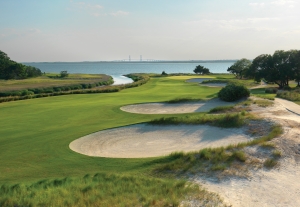
Home to three championship golf courses, Sea Island Golf Club is a world-renowned destination.
At higher altitudes, due to lower air density, while it may be easier to consistently hit the ball straighter and longer, it’s harder to intentionally curve. At 5,000 feet in elevation, the air density is about 14 percent lower than at sea level, so a player’s hook or slice will curve about 14 percent less.
“For most golfers, it is advantageous to play a version of their natural shot pattern whether that be a draw or a fade,” says Jared Zak, Elite Instructor at the Sea Island Golf Performance Center. “Because of its year-round temperate weather and sea level elevation, there is no better place to test those shots than Sea Island.”
The first of the resort’s two championship courses, Seaside Course is routinely ranked among the top 100 courses in the United States and combines beautiful oceanfront views with natural settings into a course that is both challenging and fun. “There are several obstacles to navigate on Seaside, and working a predictable shot pattern is generally best for avoiding them,” states Zak.
The course’s 421-yard 4th hole is a good test of any player’s technique. This distinctive hole requires a well-placed tee shot to a fairway protected by wetlands on both sides. The second shot, around the dogleg left, requires a forced carry across the marshland. A true example of a risk and reward hole that can be played aggressively, to shorten the hole, or conservatively, which significantly lengthens the hole.
Centerpiece to Sea Island Golf Club is The Lodge at Sea Island, a Forbes Five-Star destination. Opened in 2001, The Lodge provides an intimate 58-room setting for couples and golfers. Surrounded by the sandy beaches joining St. Simons Sound with the Atlantic Ocean, The Lodge boasts seven golf-in golf-out cottages, including the King Cottage with a private hitting bay, an oceanfront pool and pool house, an 18-hole putting course called Speedway, and the world’s finest Golf Performance Center.
All things considered–for shorter or greenside shots, elevation and temperature considerations become somewhat less important. The shorter the shot, the slower the ball moves through the air, and the less effect altitude has on its trajectory.


